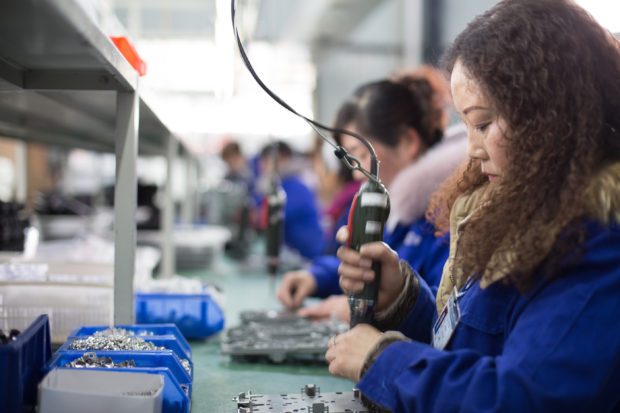Since acute and chronic climate risks, like floods and droughts, threaten damage and disruption to supply chains across critical industries, including the semiconductor manufacturing sector, it’s critical to identify and manage evolving risks, according to a new blog from Moody’s.
The blog, written by Claire Souch, vice president of Climate Risk, Moody’s RMS, identifies the role of semiconductors in modern electronics “and their underpinning of everything from communications to transportation to countless other essentials.”
Utilizing its own Orbis private companies data resource tool and Climate on Demand Pro climate risk modeling platform, Moody’s determined that an estimated “75 percent of the world’s semiconductor manufacturing capacity is concentrated in East Asia and China, with Taiwan and South Korea producing the majority of the world’s semiconductors.”
Taiwan is a leading provider of semiconductor manufacturing—it holds 92 percent of the most-advanced (below 10 nanometers) semiconductor global manufacturing capacity—and is also one of the wettest places on earth, with much of its rainfall driven by typhoons.
Despite this, the country is vulnerable to drought, with data revealing no typhoons made landfall in the 2020-2021 season.
Moody’s data showed that across semiconductor facility locations in Taiwan, the costs associated with flooding is expected to rise by around 30 percent, water stress by 35 percent, sea-level rise by 60 percent, and heat stress by 150 percent by 2050 under a moderate climate change scenario.
An extreme climate change scenario accelerates water stress by four-to- five times, Souch stated.
Other Asia-Pacific countries, particularly in South Korea, could see an impact of over 75 percent by 2050 (using a moderate scenario) on costs and reduced production without additional risk reduction features, Souch wrote.
“South Korea’s lengthy coastline and its low-lying coastal areas are also very vulnerable to sea level rise and could see increased costs to industrial facilities of over 70 percent on average by mid-century,” Souch stated, adding “With India also starting to initiate policies favoring greater self-sufficiency in semiconductors, it also faces an overall doubling in the risk from flooding by mid-century.”
Ohio, Arizona, New York are among the U.S. states where plans have been announced for future semiconductor manufacturing builds, the Moody’s blog author noted. But the locations considered have their own weaknesses when it comes to natural catastrophes.
“Our analysis shows that New York is in the top 10 U.S. states for which water stress is expected to increase the most over the next 50 years under a moderate scenario, Arizona and Ohio are in the top 10 for increases in flooding impacts, and Arizona is also very vulnerable to heat stress,” Souch stated.
For a multibillion dollar fabrication plant being developed north of Phoenix, Ariz., the potential climate change impacts are led by water stress and heat stress.
According to Moody’s, under a moderate (RCP4.5) climate change scenario by mid-century, for a hypothetical $1 billion of exposure, several hundred thousand dollars of damage and business disruption are projected to occur as a result heat stress, water stress and wildfires each year.
“Costs from heat stress are projected to more than double compared to today, with extreme heat expected to affect labor productivity and energy costs,” Souch added.





















 Executives on the Move at HSB, American Modern Insurance Group, AIG
Executives on the Move at HSB, American Modern Insurance Group, AIG  A Practical Blueprint: The Five Plays of an Innovation Culture
A Practical Blueprint: The Five Plays of an Innovation Culture  Chubb, The Hartford, Liberty and Travelers Team Up on Surety Tech Co. Launch
Chubb, The Hartford, Liberty and Travelers Team Up on Surety Tech Co. Launch  AI in Property/Casualty Insurance: Why Trusted Data Is the Missing Link
AI in Property/Casualty Insurance: Why Trusted Data Is the Missing Link 